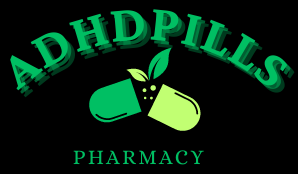Introduction
Attention Deficit Hyperactivity Disorder (ADHD) is a neurodevelopmental disorder that affects millions of children worldwide. While its exact causes are not fully understood, extensive research has shed light on several risk factors that can contribute to its development. This article explores the prenatal and early childhood risk factors associated with ADHD. It provides practical tips for parents to promote a healthy developmental environment for their children.
1. Genetic Factors
Genetics plays a significant role in ADHD development. Studies have shown that children with a family history of ADHD are at higher risk of developing the condition themselves. If a parent or sibling has ADHD, the risk increases even more. While genetics can’t be changed, being aware of family history can help parents and caregivers monitor early signs and seek early interventions.
2. Prenatal Risk Factors a. Maternal Substance Use:
Prenatal exposure to tobacco, alcohol, or illicit drugs has been linked to an increased risk of ADHD in children. Pregnant women are advised to avoid these substances to reduce the risk.
b. Premature Birth: Babies born prematurely are more likely to develop ADHD than those born at full term. Proper prenatal care and medical advice for high-risk pregnancies can minimize this risk.
c. Low Birth Weight: Low birth weight has also been associated with a higher likelihood of ADHD. Proper nutrition and prenatal care during pregnancy can promote healthy birth weights.
3. Environmental Exposures a. Lead Exposure: Lead is a toxic metal that affects a child’s developing brain. Lead exposure, even at low levels, increases ADHD risk. Ensuring a lead-safe environment by identifying and eliminating potential lead sources is crucial.
b. Pesticides and Chemicals: Some studies suggest a possible link between exposure to certain pesticides and chemicals and an increased risk of ADHD. Reducing exposure to these substances, especially during pregnancy and early childhood, is essential.
4. Early Childhood Risk Factors a. Excessive Screen Time:
Excessive screen time, especially before 2, is associated with attention problems in children. Limiting screen time and encouraging more interactive activities can benefit.
b. Lack of Physical Activity: Sedentary lifestyles in early childhood may contribute to ADHD symptoms. The benefits of regular physical activity can improve attention and behavior.
c. Inadequate Sleep: Sleep is crucial for a child’s development, and insufficient sleep has been linked to attention and behavior issues. Establishing a consistent bedtime routine and ensuring enough sleep can mitigate this risk.
5. Parental Strategies a. Early Intervention:
Recognizing a person’s signs of ADHD and seeking professional help can lead to early intervention and support. Early interventions, such as behavioral therapy, can improve outcomes and manage symptoms effectively.
b. Consistent and Structured Environment: Creating a consistent and structured home environment can help children with ADHD better manage their symptoms. Clear routines and expectations can reduce anxiety and improve behavior.
c. Positive Reinforcement: Encouraging positive behaviors and using positive reinforcement techniques can be more effective than punishment-based approaches in managing ADHD-related challenges.
Conclusion
ADHD is a complex neurodevelopmental disorder influenced by genetic and environmental factors. While some risk factors are beyond parental control, being aware of them can help parents take proactive measures to create a supportive environment for their children. By implementing healthy lifestyle choices, seeking early intervention, and providing a loving and structured environment, parents can significantly contribute to their child’s well-being and help them thrive despite ADHD-related challenges.




